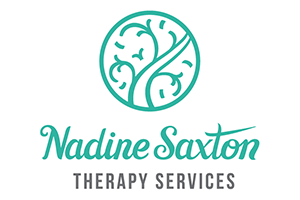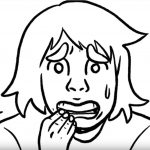My teacher Peter Madden was fond of saying “Awareness is the first step to change.” He also pointed out, only we can make the connections for the change to occur. This takes attention and intention. A somatic approach to living is the personal awareness about how we encounter and participate in any part of our life, our body self is the way in to this understanding.
In my last article I talked about the palm scapula connection and how initiating movement from different parts of our hand creates a different feeling and connection from our periphery to our core. We explored connecting with space (outer) towards our center (inner).
Initiating movement from either our thumbs or our pinky fingers activates a kinetic muscular chain and creates a relationship between our scapula bone and our humerus bone, (no that is not our funny bone, humerus is the upper arm limb). This is known as the scapular-humeral rhythm.
When a figure of eight excursions smoothly around any of the three planes, our rotator cuff muscles and other supportive shoulder muscles are functioning well. If there is a catch, or a ratchety movement, or pain, there may be some fascial restriction in this region. Moving to mid or near reach space, where no pain occurs, encourages range and a release of any holding.
Bonnie Bainbridge Cohen, founder of Body Mind Centering (and student of Irmgard Bartenieff for 19 years) tells of Irmgard having them do a “finger dance” in which they moved from each finger to reveal meaning and message. Bonnie’s exploration led to the discovery that there is a relationship between each finger and each part of our shoulder blade.
Finger to Shoulder Blade
If you are not familiar with your anatomy, it is a good idea to see the image of the shoulder blade to make stronger connections.
Here are the connections Bonnie discovered and shares: Pinky finger is aligned with the inferior angle (the bottom tip) of the scapula: Your ring finger is aligned with the axillary or lateral (outside) border of the scapula. Your middle finger is in connection with your shoulder socket (Glenoid cavity). Your index finger connects to the top part of your scapula (aka spine of the scapula) to where it meets the clavicle bone in front. Finally, your thumb relates to your coracoid process in the front (coracoid means beak like).
Your coracoid process is the “thumb’ of your shoulder blade. To experience it, put your right thumb into the triangular space below your left clavicle and beside your armpit. When your thumb meets a bone, this is the coracoid process.
Your right thumb connects through the axis of the coracoid process. Now, leading with your left thumb, move your arm. Wherever your left thumb goes, so the right coracoid process goes. Can you feel this movement in your shoulder area? Intending to move from your thumb immediately connects you to your shoulder.
The muscle that attaches to the coracoid process is the short head of your Biceps Brachii (your ‘guns’). As you flex your forearm at the elbow, or your whole arm at the shoulder, or turn your palm upwards, you are activating this muscle. How does this awareness shift your sense of moving?
Spiral out
While we are embros, our arms grow in an outwards spirilic fashion. Start with your hands as close to your chest as possible with your palms facing the floor. Gradually unfold your arms allowing your palms and fingertips to lift and lead. At what point do your arms begin to spiral?
It does not matter where you move to in space, forwards, side-wards, upwards, downwards or any combination (backwards and downwards) – if you allow your fingers and palms to lead – at some point you will experience an outward spiral of your arm.
It is easy to see and feel this spiral when leading with your pinky finger. With your palm down, sequencing from your pinky through each finger to your thumb roll your palm up, if you keep twisting through your wrist, you will feel your forearm rotating to your elbow.
If you allow the spiral to sequence up your arm (you may find you are lifting or moving your elbow to the side in space) into your shoulder joint you would experience external rotation in your shoulder joint and into your shoulder blade.
If you hold the movement for a second, your will see the spirilic twist from your pinky to your thumb to your wrist, elbow, shoulder, shoulder blade. If you are standing, you may even notice that you are twisting a little through your thoracic spine.
To untwist your arm, try leading with your thumb and sequence through your wrist, elbow into your shoulder joint and shoulder blade, you can continue into internal rotation of your arm. What happens to your shoulder blade? What happens through your spine? How is your range of motion?
Now initiate the outward and inward spiral with your thumb, – then your initiate with your index finger, then try with your tall boy finger, then ring finger, then pinky. What do you notice?
If you experience pain or restriction when initiating with any of the fingers, you can follow the connection to a place on your shoulder blade – and if you imagine a little movement in that area, you will help release the holding pattern you have created. Frustration is an inhibiting emotion that can lead to constriction in other ways. Be gentle with yourself and meet yourself where you are.
Remember to play with your reach spaces. Pain is a messenger, if your far reach space hurts to spiral into initiating with your tall boy finger, what is your mid reach space like? What is your ability in your near reach space? Congratulate yourself for moving in this range.
Somatic Awareness
This practice of exploring and noticing the sensation of movements is the key to somatic awareness. Richard Strozzi-Heckler states that sensations are “the building blocks of life and the foundational language of life. Sensations appear as temperature, pressure, shape, and movement. They are sources of information and a direct way of connecting with the self. Sensations are always present and they’re interlinked with our thinking, acting, feeling, sensing, perception, and emotions. By bringing our attention to sensations we can bring ourselves into the present moment. “
How we pay attention and what we notice about our sensations provides us with more subjective experience of ourself. The more we know about ourself, the more choices we have available to move, to decide, to do, to be.
Next month we will look at the developmental support of our fingers and hands in relation to our building of strength and connection to our thoracic torso as well as other somatic awakenings.












